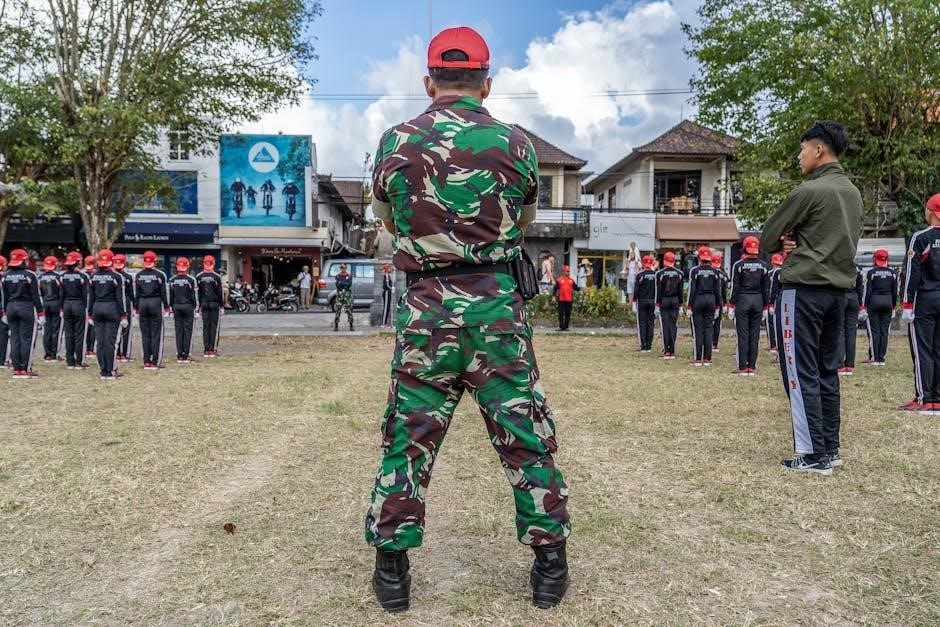Instructional leadership teams are groups of educators who work together to improve student learning and achievement, using data and research to inform their decisions and practices, leading to better outcomes for all students everywhere.
Definition and Purpose
The instructional leadership team is defined as a group of educators who share responsibility for improving student learning and achievement.
The purpose of the instructional leadership team is to provide a framework for teachers and administrators to work together to improve instruction and student outcomes.
This team is responsible for analyzing data, identifying areas for improvement, and developing strategies to address these areas.
The instructional leadership team plays a critical role in shaping the instructional program and ensuring that it is aligned with the school’s mission and vision.
By working together, team members can share their expertise and perspectives, leading to more effective and sustainable improvements in instruction and student learning.
The team’s purpose is to foster a collaborative and supportive environment that promotes ongoing learning and improvement, ultimately leading to better outcomes for all students.
Effective instructional leadership teams are essential for creating a positive and productive school culture that supports the academic success of all students.

Roles and Responsibilities
Instructional leadership teams have various roles and responsibilities to improve student learning and achievement effectively always everywhere.
Principal and Senior Leadership Team
The principal and senior leadership team play a crucial role in instructional leadership, as they are responsible for setting the overall direction and vision for the school. They work closely with teachers and other staff members to develop and implement instructional strategies that improve student learning and achievement. The principal and senior leadership team also provide guidance and support to teachers, helping them to develop their skills and knowledge in order to deliver high-quality instruction. Additionally, they are responsible for evaluating the effectiveness of instructional programs and making adjustments as needed. By working together, the principal and senior leadership team can help to create a positive and supportive learning environment that benefits all students. They also facilitate communication and collaboration among staff members, which is essential for effective instructional leadership. Overall, the principal and senior leadership team are essential to the success of any instructional leadership team.
Instruction Coordinators
Instruction coordinators are essential members of the instructional leadership team, responsible for coordinating and implementing instructional programs and services. They work closely with teachers, principals, and other staff members to develop and deliver high-quality instruction that meets the needs of all students. Instruction coordinators also provide professional development opportunities for teachers, helping them to stay current with best practices and research-based instructional strategies. They play a key role in evaluating the effectiveness of instructional programs and making recommendations for improvement. By analyzing data and research, instruction coordinators help to identify areas of strength and weakness, and develop plans to address these areas. They also facilitate communication and collaboration among staff members, which is critical for effective instructional leadership. Overall, instruction coordinators are vital to the success of the instructional leadership team, helping to ensure that all students receive a high-quality education that prepares them for success. They are responsible for managing instructional resources and budgets.

Characteristics of Instructional Leadership Team Members
Team members possess strong communication and collaboration skills, enabling effective teamwork and leadership, always supporting each other, every day, everywhere, with seven key characteristics.
Guiding Principles
Instructional leadership teams operate under specific guiding principles that shape their work and decision-making processes, ensuring a focus on student learning and achievement. These principles include a commitment to collaboration, a focus on data-driven decision making, and a emphasis on ongoing professional development. The team’s guiding principles also prioritize building a positive and inclusive school culture, fostering strong relationships with students, teachers, and the broader community. By adhering to these principles, instructional leadership teams can create a cohesive and effective approach to instructional leadership, ultimately leading to improved student outcomes. Effective teams also recognize the importance of adaptability, being willing to adjust their approach as needed to address the unique needs and challenges of their school community. This flexibility enables teams to respond to emerging issues and opportunities, ensuring that their work remains relevant and impactful. Guiding principles provide a foundation for instructional leadership teams.

Functions of Instructional Leadership Team
Teams oversee instructional programs, analyze data, and make informed decisions to improve student learning and academic achievement always effectively.
Communication and Collaboration
Effective communication and collaboration are essential components of a successful instructional leadership team. Team members must be able to share ideas, discuss issues, and work together to achieve common goals. This can be achieved through regular meetings, open dialogue, and a willingness to listen to and consider different perspectives. By fostering a culture of collaboration and communication, instructional leadership teams can build trust, promote teamwork, and drive collective action to improve student learning and achievement. Team members should also be able to communicate effectively with other stakeholders, including teachers, students, parents, and the wider community. This helps to ensure that everyone is informed and engaged in the instructional leadership process, and that the team’s efforts are aligned with the needs and goals of the school and its community. Regular communication and collaboration can help to identify and address challenges, and to celebrate successes and progress.
Leading Instructional Improvement
Leading instructional improvement is a critical function of the instructional leadership team. This involves analyzing data and research to identify areas for improvement, and developing strategies to address these areas. The team must also be able to lead the implementation of new instructional practices and programs, and to provide support and guidance to teachers and other staff members. By leading instructional improvement, the team can help to drive student learning and achievement, and to ensure that the school is providing a high-quality education to all students. The team must be able to work closely with teachers and other staff members to develop and implement improvement plans, and to monitor progress and adjust strategies as needed. This requires strong leadership and communication skills, as well as a deep understanding of instructional practices and strategies. The team’s efforts should be focused on improving student outcomes and achieving the school’s instructional goals.

Best Practices for Instructional Leadership Teams
Effective instructional leadership teams follow established protocols and guidelines to ensure success and improve student outcomes always everywhere effectively.
Grounding Work in a Clear School Vision
Instructional leadership teams ground their work in a clear school vision, which serves as a guiding framework for all decisions and actions.
This vision is developed in collaboration with stakeholders, including teachers, students, and community members, to ensure that everyone is working towards a common goal.
The school vision is used to inform the development of instructional programs, assessments, and professional development opportunities, and to guide the allocation of resources.
By grounding their work in a clear school vision, instructional leadership teams can ensure that all efforts are focused on improving student learning and achievement, and that everyone is working together to support the success of all students.
This approach helps to promote a sense of unity and purpose, and to foster a collaborative and supportive school culture.
The school vision is regularly reviewed and revised to ensure that it remains relevant and effective, and that it continues to guide the work of the instructional leadership team.
This process helps to ensure that the team remains focused on its goals, and that it continues to make progress towards achieving its vision.
Fostering a Culture of Continuous Improvement
Instructional leadership teams play a crucial role in fostering a culture of continuous improvement in schools.
This involves promoting a mindset of ongoing learning and growth among teachers and staff, and encouraging them to reflect on their practices and identify areas for improvement.
The team can support this process by providing opportunities for professional development, mentoring, and coaching, as well as by encouraging collaboration and peer feedback.
By fostering a culture of continuous improvement, instructional leadership teams can help to create a positive and supportive school environment, where everyone is focused on improving student learning and achievement.
This approach can also help to promote a sense of innovation and experimentation, as teachers and staff are encouraged to try new approaches and strategies.
The team can also use data and research to inform their decisions and identify areas for improvement, and to develop strategies for addressing these areas.
This helps to ensure that the school is continually moving forward and improving, and that everyone is working together to support the success of all students.
